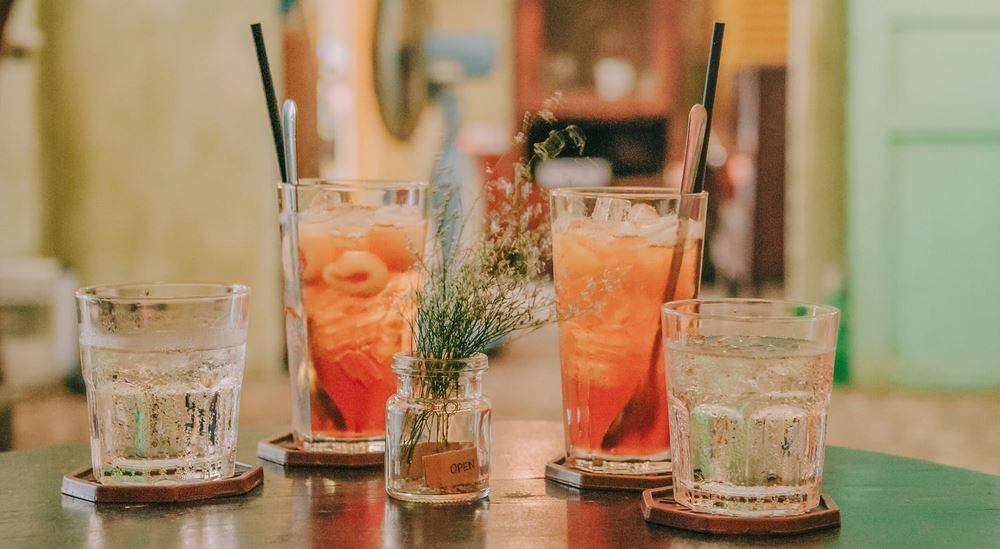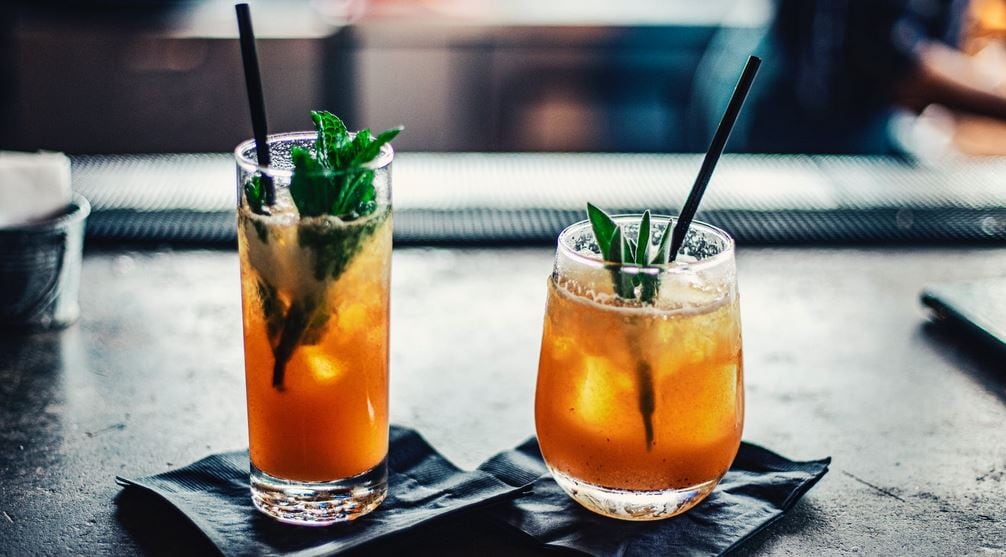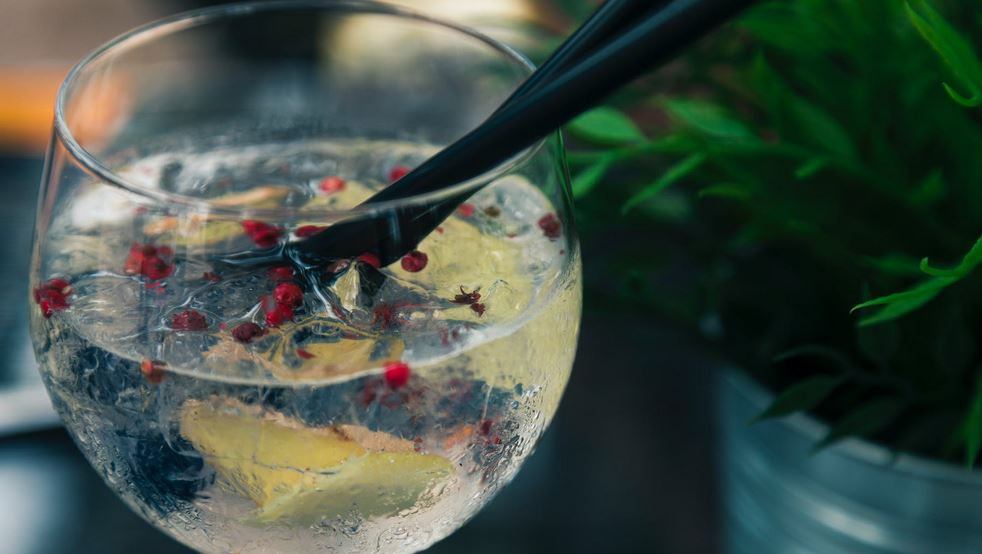Cocktails were quickly becoming the darling of the pub trade as operators quickly cottoned on to the fact that they offered good margins, added a certain je ne sais quoi to a venue and also appealed to an increasingly educated drinker.
However, while other drinks categories – beer, cider and wine – saw rising fortunes from the lifting of lockdown in July, cocktails lacked their lustre over summer and early autumn before pubs were hit by England’s second shutting.
But now we have a month to reflect on our offering and time to plan how to entice those thirsty punters back into our venues, I’m suggesting savvy operators turn their attention to cocktails in December and beyond for three reasons:
- Strong margins: Customers will pay a premium for a drink made with just a few ingredients, handsome glassware and some tidy garnishes.
- Simplicity: Whether an expert or a beginner, as long as a drink looks the part and has a great taste, customers will part with their cash for a mixed drink. You don’t need to be an expert bartender.
- Pizazz: Cocktails on a menu are a draw and work for almost all occasions – Bloody Mary at brunch, a spritz with lunch or an Irish coffee for a post-dinner dessert.
Before coronavirus, cocktail sales in the on-trade experienced strong growth. CGA managing director for the UK and Ireland Jonathan Jones says they were “continuing to go from strength-to-strength”.
ADVERTISEMENT – Festive drinks with Pernod Ricard UK
Finding festive drinks inspiration in masterclasses
This festive season is set to be different as social distancing and health and safety restrictions continue. To give consumers confidence to visit bars this Christmas, Pernod Ricard UK is supporting bar operators through engaging virtual experiences and festive serve inspiration to help them adapt.
Pernod Ricard UK will be partnering with customers to offer dual-branded online cocktail masterclasses over the festive period. With 19 to 34-year-olds being the most likely to engage in on-trade-led Christmas activities, the masterclasses will educate consumers on how to create cocktail classics and help build consumer loyalty.
Consumers will also be looking for something special and will be more inclined to trade up, so it’s important for outlets to get their drinks menu right. Festive twists on classic cocktails, such as the Chocolate Orange Espresso Martini and Beefeater Hot Christingle, will not only ensure stand out but are also low touch with minimal ingredients.
Chocolate Orange Espresso Martini
- 30ml Absolut Vodka
- 15ml Grand Marnier
- 30ml Kahlua
- 5ml Sugar Syrup
- 25ml Espresso
- Method: Add all ingredients into a shaker filled with ice. Shake and strain into a coupette glass
- Garnish: Orange wheel
Beefeater Hot Christingle
- 50ml Beefeater Blood Orange
- 30ml Orange Juice
- 15ml Sugar Syrup
- 75ml Hot Water
- Method: Combine all ingredients and top with hot water and serve in an enamel cup
- Garnish: Orange slice
Spiced Cinnamon Passion Star Martini
- 50ml Absolut Vanilla
- 25ml Passionfruit purée
- 15ml Cinnamon Syrup
- 1 Dash of Aztec Chocolate Bitters
- Method: Add all ingredients into a shaker filled with ice. Shake and strain into a coupette glass
- Garnish: Flaming cinnamon powder and a shot of Prosecco
For support with your Christmas serves, get in touch with your Pernod Ricard UK representative.
The category was worth £624m in the on-trade, growing at 6.4% year-on-year, with 43,500 outlets serving cocktails and 10.3m consumers drinking them out of home in the first quarter of 2020 compare with the same period in 2019.
“During lockdown cocktails were understandably one of the hardest hit categories, as consumers struggled to replicate the great experiences they have had with the category while out in trade,” says Jones.
“While we saw a bounce back on reopening, there is still some way to go for the category to recover. With many outlets rationalising their drinks offer and a lack of at-bar ordering, more needs to be done to drive awareness of the cocktail offer in outlet and drive consumers back into the category.”
Drive consumer engagement
Jones strongly believes cocktails are a great way for operators to drive consumer engagement within the spirits category.
What do drinkers want?
- 56% of cocktail drinkers say that environmentally friendly serves (e.g. reusable straws, glass as opposed to plastic) are important when choosing to drink cocktails
- 45% say environmentally friendly ingredients/garnishes (e.g. local produce, upcycled ingredients) are important
- 65% of cocktail drinkers tell us that they are actively trying to lead a healthy lifestyle (v 62% of GB average) and of them, one in four have made a drinks choice based on calorie content
- 36% say that “how healthy a cocktail is” is very important when choosing to drink the category while out in trade
- 26% of cocktail drinkers have seen draught cocktails when out in trade but of those, 65% have purchased one
- 28% of cocktail drinkers have seen draught cocktails when out in trade but of those, 70% have purchased one
- 81% of those who have purchased a draught cocktail say they would be likely to order them again
- 4% of consumers were drinking cocktails at home during lockdown, compared to 22% in trade in Q1 2020
All stats from CGA
To ensure success with cocktails, he says menus need options that work with the food offering and are suited to lower tempo, earlier daypart occasions.
“From a category perspective, flavoured gin, spiced rum and liqueurs are all gaining popularity within cocktails and should be considered alongside the more traditional vodka and white rum serves," Jones adds.
“A mix of tried and tested, classic serves with broad appeal will help bring consumers into the category, but with some signature or modern serves required in order to drive excitement within the category and retain the interest of the more discerning consumer.
“Draught and/or pre-batched should be a consideration,” he continues. “These options reduce operational complexity and support consistency and speed of delivery without the need for skilled bartenders. With no at-the -bar ordering, theatre of serve has become less important in driving consumers into the category, so in the short-term at least, this is no longer a barrier to offering draught or pre-batched.”
You heard it here first, the pomp and ceremony around cocktails can be relaxed a little as consumers won’t be waiting at the bar for their drinks, which means it’s the perfect time to perfect an offering.
But what do consumers want when they’re drinking cocktails out of home in a post-pandemic on-trade? Well, with many ‘experts’ predicting upcoming economic struggles, it makes sense to hark to the last time money was tight.
Pernod Ricard UK on-trade channel director James Bremner points out that during the 2008 recession, contrary to what some might think, many customers were willing to part with their money for a special experience.
“When the economy was under pressure in 2008, recession-struck consumers responded by being,” he says and cites data from the CGA Mixed Drinks report for the first quarter of 2020 as well as stats from Nielsen’s Covid BWS Tracker to predict cocktails to focus on post-lockdown.
“Before the pandemic, longer and refreshing spritz-style serves were in growth (+223% v the previous year) and had gained a 4.2% share of total cocktail serves in Q1 of 2020, driven predominantly by the popularity of flavoured gins. Flavoured spirits, whether gin, vodka or spiced rum, were also becoming increasingly popular in cocktails pre-lockdown, and these categories experienced the most off-trade growth during lockdown as trends from the on-trade filtered into the off-trade,” he explains.
“Fundamentally, the trends haven’t changed. Limitations on the late-night sector, the rule of six and 10pm curfews, have meant that drinking occasions have become much more low-tempo so longer, spritz-style serves continue to be hugely important, and this is reflected by them having made their way into the top 10 list of on-trade cocktails.
Robust trends boomerang

“Because of the strong growth of flavoured spirits in the off-trade, these robust trends are likely to boomerang back into the on-trade, and we have already seen flavoured gins claim four of the top 10 value share winning brands in the first month of the on-trade re-opening.
“Absolut Vanilla also increased its share of total spirits volume by 51% in the first eight weeks of the on-Trade reopening versus the same period last year last year, which suggests that the Passion Fruit Martini continues to grow in popularity.”
When Brits can finally make their way back into venues, the question is really about what operators need to do to make their cocktail menus attractive.
Drinks expert, writer and broadcaster Douglas Blyde points out that, right now, customers are more likely to be focusing on their home bars, but when it’s time to get back out there, operators need to ensure a few things to ensure success.
“The more escapist and exotic the stories behind drinks, the better, to take people’s minds off dreary lockdown Blighty,” says Blyde. “For British producers, it’s time to re-think the meaning of the Union Jack if stamped on a bottle – for some it’s glorious, others, jingoistic.
“They want beautiful drinks in a comfy setting, preferably on a leafy, heated terrace with blankets and a view, to make the effort of going out in the midst of a pandemic, worth the effort and perceived risk.”

For those worrying about customers propping up home bars rather than ones in the on-trade, Blyde hastens to add there is little to worry about, even if consumers have become more expert in making cocktails themselves.
When asked if customers will come back, he explains: “Yes, ultimately, as they gain experience from making drinks at home, and thus understanding their palate more and the cost of decent spirits, they will want to seek inspiration in company from actual expert bartenders who no doubt will value the input of their guests with more patience and consideration than ever before.”
There will, however, be occasions when customers can’t or won’t be able to make it into an outlet. In these cases there is no need for consumers to go without expertly made cocktails, as Alex Percival, director of Tin & Glass, a hospitality consultancy firm, explains the pandemic has opened up business’s and consumers’ minds to new offerings.
“There is now a huge market for home delivery and takeaway cocktails driven by the popularity of drinks in the on-trade,” he says. “It’s become a huge market and it is growing as bars and other businesses, driven by consumer demand, move into it.
“And this doesn’t mean there is no need to go premium either, most consumers can’t make cocktails at a professional level at home so they recognise that to get the level of drink they like in the on-trade they’re still going to have to pay for it.”
But he too is optimistic punter will be back in the bar, even if they have their own at home, because the diversity of ingredients on the average home bar will be sparse when compared to that of an on-trade outlet.
So, in short, just let them drink cocktails.
The future of the G&T

Anna and Justin Matterson, founders of QVT Distillery in Provence, France, say:
“We think that the current G&T trend will continue, but see more "tailored" versions being made popular, with products of greater quality. With flavours being paired and made more bespoke to the liking of the individual, as opposed to the old 'cheap gin and high sugar tonic'.
“Further to this, we believe that the providence of the gin is becoming more and more important, ensuring that it is truly from the region that it says it is.
“However, it is not only the gin market that is expanding with gins made in small batches with unique flavours and compositions, there are also many new and exciting types of tonic, including tonic syrups, that are being developed all over the world.
There are also trends in the types of ice used, larger ice cubes (which we like) and clear ice. Not to mention the garnish – the possibilities are endless.
“We see many classic cocktails made for other alcohol types that are being adapted with gin as the base, such as for example the Margarita, with gin instead of rum it becomes a Margatini, and swapping from whiskey to gin in a Whiskey Sour makes it a Gin Sour.”
